
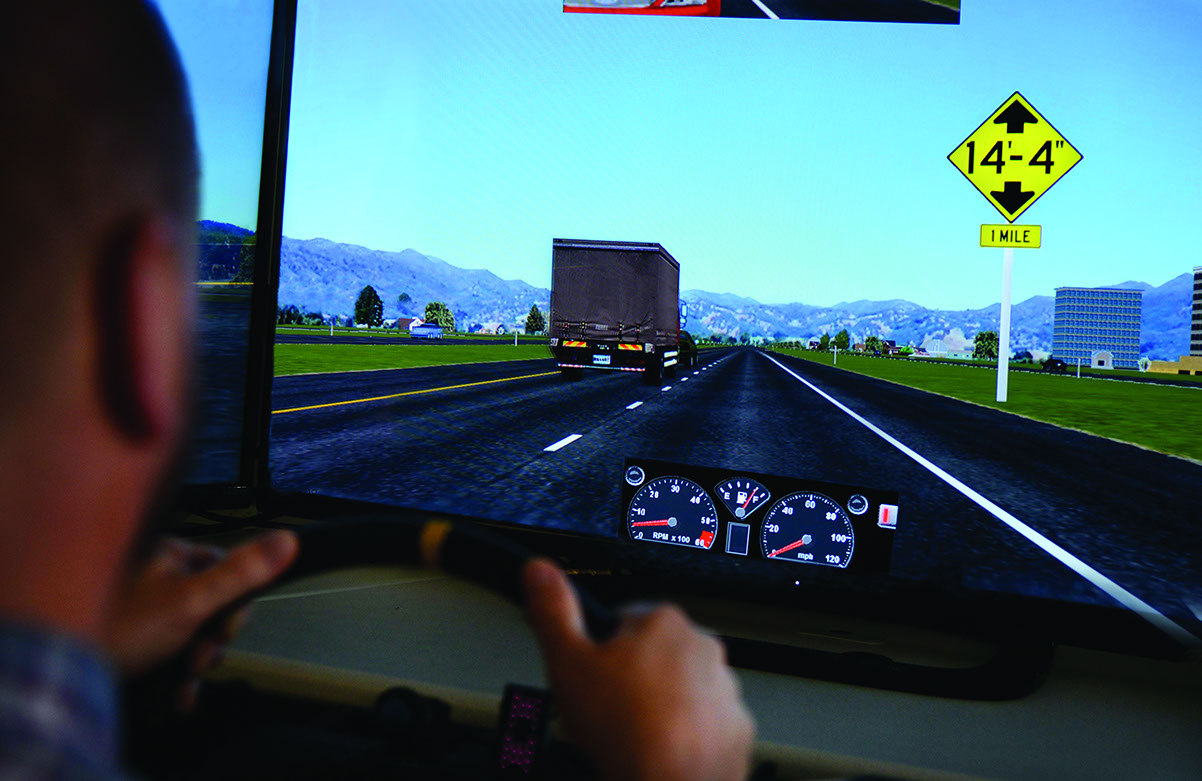
low-bridge warning signs
SAFETY CENTER RESEARCHERS
look at improving
“Coming from a human perspective, it is giving us some more answers about how people process information as they drive and how their expectations play into how they react in situations,” Laura Higgins, TTI co-principal investigator, said.
After driving on the highway for hours, stuck in traffic, the last thing truck drivers need to deal with is finding that they are approaching a bridge that is too low for them to fit under after it is too late to get off the road.
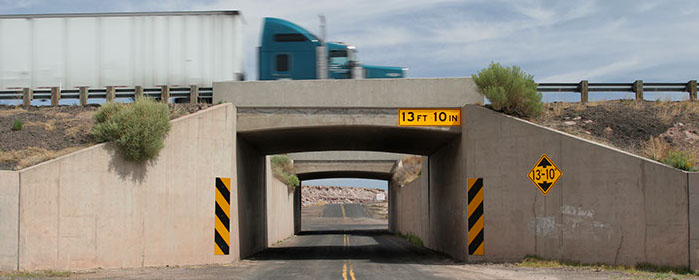
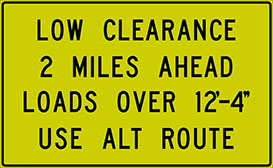 On a number of occasions, truck drivers have found themselves trapped in a scenario where there are two bridges, one right after another, and the truck can fit under the first but not the second bridge, without an exit in between. This led to drivers striking bridges. District and maintenance engineers at the Texas Department of Transportation (TxDOT) expressed concerns that new construction, such as reverse-diamond interchanges, would lead to more safety problems if the issue was not addressed. Texas A&M Transportation Institute researchers were asked to research ways to better communicate low-bridge warnings to truck drivers now and in the future.
On a number of occasions, truck drivers have found themselves trapped in a scenario where there are two bridges, one right after another, and the truck can fit under the first but not the second bridge, without an exit in between. This led to drivers striking bridges. District and maintenance engineers at the Texas Department of Transportation (TxDOT) expressed concerns that new construction, such as reverse-diamond interchanges, would lead to more safety problems if the issue was not addressed. Texas A&M Transportation Institute researchers were asked to research ways to better communicate low-bridge warnings to truck drivers now and in the future.
The first step was to brainstorm different types of warning signs that would draw truckers’ attention to the fact that they would need to exit before the first bridge in order to avoid being trapped on the freeway after approaching the second, lower bridge. Signs would need to be added to the freeway to encourage truckers to exit, as well as on the frontage road to discourage truckers from approaching a bridge they could not fit under.
Six freeway signs and two frontage road signs were chosen for a survey of commercial truck drivers.
After viewing each sign, drivers were asked if they interpreted the following information from the sign:
• there is no exit between bridges,
• there is no exit before the second bridge,
• you need to exit now if your truck is taller than the sign dimensions, and
• the information on the sign shown is not for the first bridge.
A greater percentage of participants responded positively to a warning sign similar to current low-bridge warning signs that included subsidiary information saying “2nd bridge, exit now,” as well as a green sign that stated “last exit before” and displayed an image of the typical low-bridge warning sign.
After the surveys, researchers prepared a simulator to further test six of the signs. Before going into the simulator, some signs were removed due to their differences from the Manual on Uniform Traffic Control Devices standards. Laura Higgins, co-principal investigator, said the researchers were concerned that nonstandard signs would confuse the drivers, which would distract them from actually reading the sign. Researchers also received feedback from TxDOT district engineers.
The simulator placed the drivers in the far left lane of a freeway. They were briefed beforehand about the characteristics and measurements of their vehicle. Each test included a distraction sign, such as a sign for an upcoming rest area, followed by the clearance test sign. Researchers were able to measure how much time passed before a driver began to move lanes in order to exit after viewing the test sign. Other truckers in the simulation were placed on the frontage road and were tested with a sign warning them not to enter the freeway.
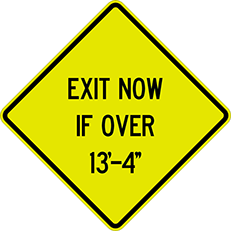
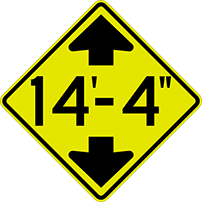
Sign 3A

Sign 3B
Sign 3, which indicated the maximum height of the second bridge and had a subsidiary sign stating the distance to the second bridge, resulted in the greatest number of correct maneuvers among simulator drivers, 93.3 percent after extraneous errors were removed. However, less than half of the participants were certain that the next exit was their last opportunity.
Other signs that did indicate “last exit” performed well in the simulator as well because drivers were more aware that there was no going back if they missed the exit. Higgins said this went along with the idea of positive guidance and giving information that acted as a direct order to drivers on the road.
Placing the distance on the sign did not necessarily influence behavior because stating that the low bridge was 5 miles away, for example, gave no indication to drivers that there would be no exit between their current location and that low bridge. One suggestion is to combine the mileage distance to the low bridge with a second subsidiary sign that states “last exit” so drivers are aware that they must exit the freeway.
Higgins said the simulator gave researchers a better idea of what goes through drivers’ minds while they’re on the road.
“Coming from a human perspective, it is giving us some more answers about how people process information as they drive and how their expectations play into how they react in situations,” Higgins said.
Higgins said understanding these expectations gives researchers the tools they need to use expectations and move past them to get drivers to do what they need to do to remain safe on roadways.
Other suggestions from the study were to include two warning signs to give drivers more time to prepare for and exit the freeway. Changeable message signs are also an option because they act as attention-getters and have more room for information to be included.
